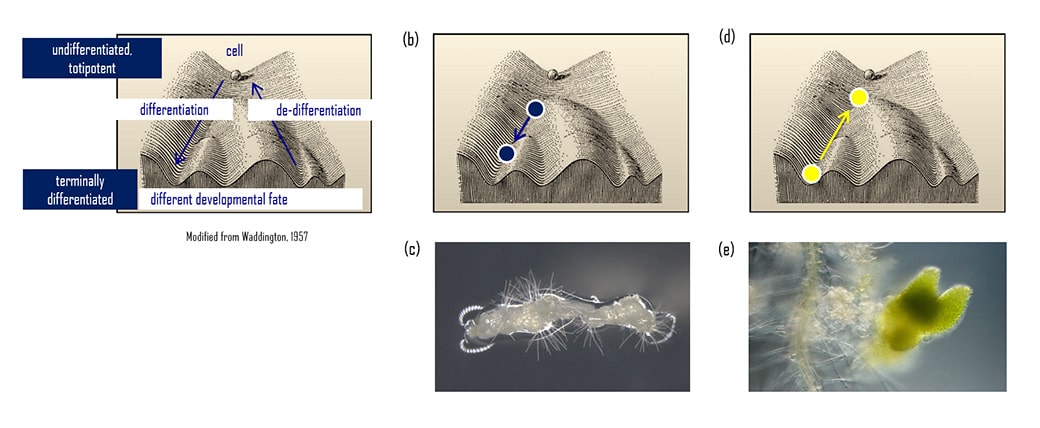2022.09.01
What we have learned about plant cell de-differentiation
Plant Regeneration and Morphogenesis ・ Associate Professor ・ Momoko Ikeuchi
Plants are characterized by their outstanding regenerative capacity. Organ regeneration is often mediated by callus formation, which has long been acknowledged to involve cellular de-differentiation. However, recent studies uncovered that hormone-induced callus formation in Arabidopsis thaliana does not entail de-differentiation of mature somatic cells. They further showed that hormone-induced callus is not a disorganized cell mass and rather they have highly organized tissue structure resembling root primordium. Other lines of evidence showed that callus formed upon tissue injury has developmental and genetic features that are distinct from hormone-induced callus, underscoring the intrinsic diversity of what are vaguely recognized as “callus.” We further showed that callus formed on root surface of a histone methyltransferase mutant is derived from terminally differentiated root hair cells. This study highlights the cellular potential of differentiated somatic cells in plants.

Figure1. De-differentiation and callus formation.
(a) Concept of cellular differentiation. Modified from Waddington (1957).
(b) Callus formation on callus inducing media (c) is differentiation rather than de-differentiation.
(c) Callus formation from PRC2 mutant root hair (e) is de-differentiation from terminally differentiated cells.
Momoko Ikeuchi NAIST Edge BIO, e0004. (2022).
